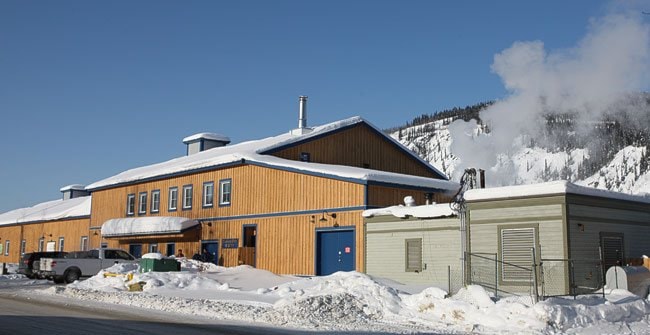No matter how much potpourri-scented aerosol the Yukon Party sprays into the air, it’s hard to hide the underlying stink that wafts from Dawson City’s problem-prone sewage treatment plant.
The good news, as presented in a news release on Tuesday, is that Dawson City’s municipal government needn’t worry about operating the plant itself in the foreseeable future. The release takes pains to avoid dwelling on the reasons for such an arrangement - namely, this “complex and significant piece of infrastructure,” which carries a $25-million price tag, looks like it may never work as promised, and has so far cost wildly more than expected to operate.
The government initially expected the plant would cost $280,000 to operate annually. It now looks like it will cost more than $1 million. That’s nearly a four-fold increase.
These costs are expected to come down somewhat if the government is able to operate the plant directly, rather than having to bring in out-of-territory consultants to run the thing as now. But it seems clear the plant will become one more burden that the government will have to pay for in the years to come, at a time when generous financial transfers from Ottawa no longer look like a sure thing.
The other big concern is that the treatment plant flunked its water quality tests for the past three consecutive summers, and it looks like it may continue to do so unless it receives pricey upgrades to provide an additional level of treatment. How pricey? Try between $5 million to $10 million. That’s the conclusion, anyhow, of an engineering report prepared by Stantec in Sept. 2015. It concludes that the sort of fine-tune fiddling done to date is unlikely to make the plant work properly during peak periods.
Put these worries together, and it’s no surprise that the City of Dawson pushed the territory to commit that it wouldn’t hand the facility over to the municipality until the treatment plant worked as promised. The government deserves some credit for making good on that pledge. But, considering how it’s the territory that oversaw the creation of this boondoggle, it only stands to reason that it must now own the mess.
Some big questions remain. As things stand the public only has the fuzziest notion of what has gone wrong inside the plant. Given that the plant first opened back in the autumn of 2012, and the government took the initiative of making this week’s announcement, you would think some sort of cogent explanation would be forthcoming. It hasn’t been.
As well, it remains far from clear what recourse is available to the government if the plant still doesn’t work as promised by the time its warranty expires one year from now. Does the government get its money back? Does this all end in another drawn out court case? At this late date, is the government even able to sue? So far, the government won’t say. Corix, the company that built the plant, isn’t talking either, and is referring all questions back to the government.
The treatment plant has a source of controversy since its inception. Rather than build a conventional lagoon, Corix proposed a “deep-shaft” scheme, which involves storing sewage in underground tanks, where the muck is stirred and mixed with oxygen to encourage bacteria to break down the waste. Naysayers noted there are not many examples of this technology being used in a cold, northern climate.
A local firm that lost the bid for the contract also accused the government of foul play. The territory’s bid-challenge committee ultimately found the contract had been awarded properly, but it did express concern that the government and municipal officials involved “appeared to lack the necessary depth of technical expertise.” As well, “there was the appearance that the evaluation committee relied too heavily on only a single technical advisor,” and “there should have been more ‘voting’ evaluators with a technical background specific to the project.”
At the time, territorial officials brushed off these criticisms. But it won’t be so easy to do that now, given how things have gone.
Some say that Dawsonites share blame for this mess, since residents voted in a March 2008 referendum against a government plan to build a sewage lagoon near the town’s entrance. But why must we be constrained by just these two possibilities - that Dawson City must either have a lagoon located at a site that some residents complained was too near First Nation housing and the underground water supply, or a fancy facility that may not actually ever work properly? Did the government really exhaust all other possibilities? A lagoon in another location, say?
Officials who gave the sewage plant the green light did so under pressure, knowing that they had already blown multiple deadlines set by the courts since the federal government first fined Dawson City for dumping roughly-screened sewage into the Yukon River back in March 2003. But given how much time had passed since this initial reprimand, surely the government should have had enough time to craft a plan that worked better than it does.
Of course, there’s no turning back the clock now. But a government interested in learning from its mistakes would conduct a thorough review to understand how to avoid making such a big mess next time around. And a government interested in being forthright with the public would be sharing a lot more information about what went wrong and what comes next.
(JT)
